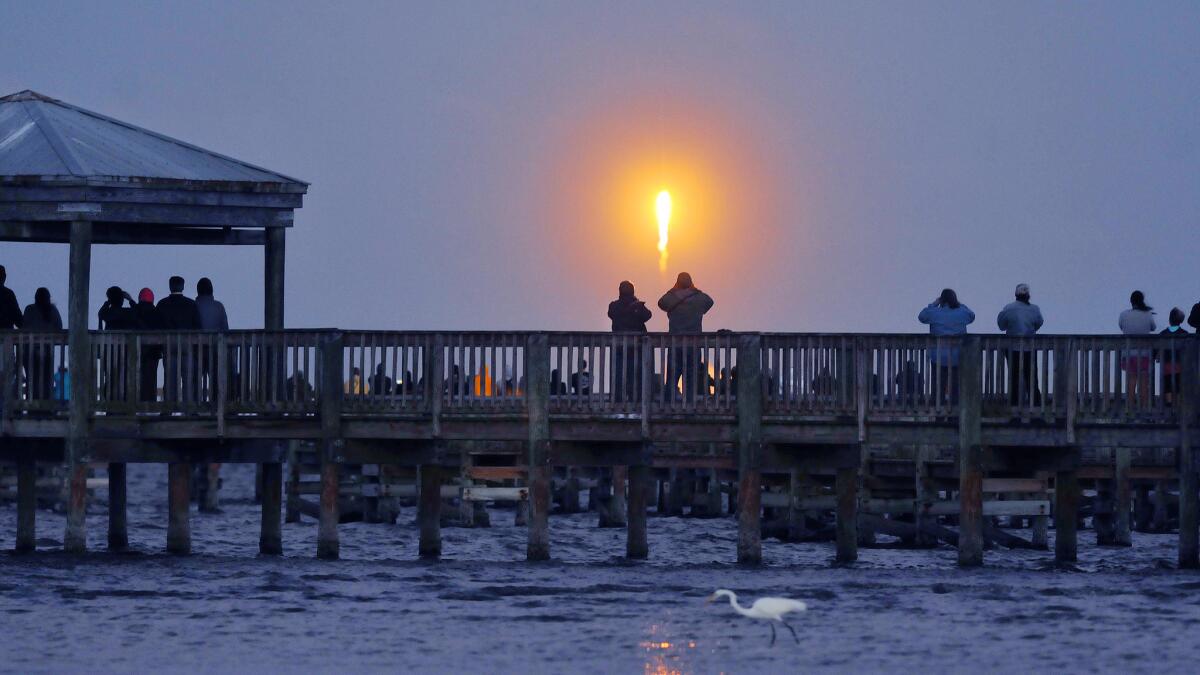SpaceX signs first customer for launch of a reused rocket

Now that SpaceX has proved that its rocket boosters can land back on Earth, the company has signed its first customer to launch a satellite on one of those reused rockets.
Luxembourg satellite operator SES reached an agreement with Hawthorne-based SpaceX to launch a SES-10 communications satellite aboard a Falcon 9 rocket at Cape Canaveral Air Force Station in Florida.
Martin Halliwell, SES’ chief technology officer, said he hoped that the satellite would launch in October. SpaceX would only say the launch was set for this fall.
“We believe this is the way to go forward,” Halliwell said. “Having these total-loss missions where nothing is recovered seems to be a terrible waste.”
Reusing rockets could eventually cut launch costs 30%, SpaceX President Gwynne Shotwell has estimated. Halliwell said he could not disclose the price that SES paid for its flight on the rocket, saying only that the company did get a discount for being the first customer.
There also was “no material change” in the insurance rate compared to using a new Falcon 9 rocket, indicating insurers’ confidence in the launch vehicle, Halliwell said.
The 5.3-ton SES-10 satellite is intended to provide broadband, video and mobile-phone service, including maritime and in-flight connectivity, to Mexico, Central and South America and the Caribbean.
Halliwell told investors this year that SES wanted to be the first commercial satellite operator to fly the same rocket twice.
In a statement, SpaceX’s Shotwell said relaunching a rocket that has already taken a spacecraft to orbit is “an important milestone on the path to complete and rapid reusability.”
By saving money on launch costs, SES could target emerging markets, such as Southeast Asia or Africa, Halliwell said. These large regions require bigger and more complex satellites, which can drive up costs.
SpaceX lists the starting price for a Falcon 9 rocket at $62 million.
“If we can reduce the cost of the launch vehicle, it allows us to design missions that nominally would be too expensive,” Halliwell said. “It should allow us to increase the cadence.”
SES has already launched two satellites on Falcon 9 rockets, and it has contracts for four more launches.
SES’ satellite will launch on a first-stage booster that landed in April after delivering supplies to the International Space Station. That was the first rocket to land on a floating droneship.
Since then, SpaceX has landed six first-stage boosters — two on land and four at sea.
The landed first-stages go through extensive testing at Cape Canaveral, including careful inspections of the entire booster, and individual engine tests in Texas. The engines are then put back in the vehicle. Before launch, the booster will undergo a static test fire.
Halliwell said the company has worked closely with SpaceX throughout its rocket refurbishment process and is “confident that we have a flightworthy rocket.”
For more business news, follow me @smasunaga
ALSO
EU says Apple must pay $14.5 billion in back taxes to Ireland
Column: Same drug, different insurance tiers, crazy-high co-pays
The key to Vizio founder William Wang’s $2-billion business? Trust in his employees







